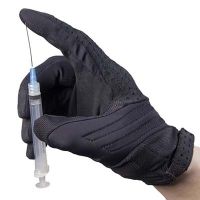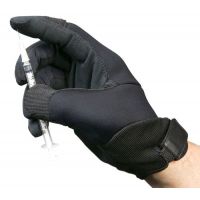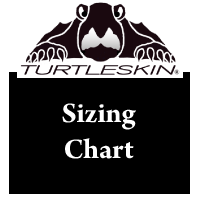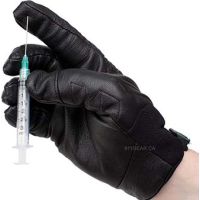How Needle Resistant Gloves Are Important for Law Officers?
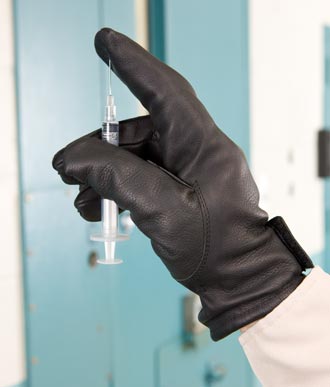
Law enforcement officers are vulnerable to needlestick injuries during investigations or intensive search operations in their daily duties, hazardous conditions and risky operations. While performing routine searches or operations, sharp substances and needles can suddenly pierce their hands causing injury and even infection from bloodborne pathogens (diseases) like hepatitis B and C, and HIV, increasing the necessity of wearing the puncture resistant gloves.
Below article is a highlight about the puncture resistant gloves and its benefits:
What are puncture resistant gloves and its benefits?
Puncture Resistant gloves help protect the hands from cut and punctures while on duty or working. We know that hand protection reduces the possibility of injuries among police officers.
Studies also suggest gloves reduce the chances of injuries among police officers. Is there a study anywhere? The U.S Department of Health and Human Services also recommends gloves for police officers whenever they go out for searches and pat-downs.
Many glove items in the market have the terms “slash resistant” and "puncture-resistant” which manufacturers use for selling their brand, but do not substantiate their claims. Before buying the gloves, it is best to research the manufacturer model details for the gloves like its puncture testing and test scores. Needlestick testing is performed to determine the gloves you are planning to buy are indeed puncture and or cut resistant.
Standard safety tests like the ASTM F2878 have made the selection process easy for safety managers seeking application specific PPE. Contact the manufacturer directly to ask any particular questions about gloves.
What makes Puncture resistant gloves different from cut resistance?
Needle resistant gloves are different from industrial puncture and cut-resistance technology that everyone uses. Puncture resistance follows two standards: blunt puncture and a needlestick puncture. In industrial or blunt puncture testing a probe which is same as ballpoint pen is used to simulate a tear or burst hazard, while a needlestick puncture testing makes use of a hypodermic needle of 21-, 25, or 28-gauge to precisely account for needle hazards in work.
Testing for cut protection is different, as the material used in it does not offer needle-resistance. So whenever you buy duty gloves, make sure that these are puncture, cut resistant and also needle-resistant. Testing is also done according to the ASTM FF2878 under ANSI/ISEA 105.
The points that you should keep in mind while buying best police duty gloves:
Gloves Should fit properly
Proper fitting gloves are important for any protective gear, including needlestick gloves. The gloves that are very small in size or large can restrict your hand moment and decrease its capability making it difficult for the police to do their tasks that need precision.
Select a size that fits comfortably without being too tight. The gloves should allow gripping strength. In case the gloves are loose, the same can call off, and can leave your hands without protection against needle punctures.
Check the Material
Materials the gloves are made of are important to define the protective feature and quality of the gloves. Many industrial gloves are made of nitrile polymer offering the highest level of protection against needlesticks. Materials to which the gloves are made of are puncture-resistant and cut resistant, and are comfortable to wear offering a good grip. Other materials like Kevlar or latex also provide a high level of protection against needlesticks.
Kevlar is a fiber offering protective cover between your hand and any sharp object you might come in contact with. These fibers are strong enough and resistant to punctures, which means these can help protect your hands from getting injured by sharp objects. Leather also provides additional protection against body fluids. Leather doesn’t stop the needle stick the Kevlar variant inside does.
Gloves have Purpose built Protective Zone
For specific needle protection, resistance gloves have protection zones purposefully created to protect specific areas of the hand. It is important to know where these zones are. These zones can, fingertips, palm, and cut resistance on the back of the hands.
Following are the protective zones that needs special mention like:
Palm: Needs protection from cut, needle and puncture.
Back portion of hand: Depending on the task, the back portion of your hand needs protection from needlestick and cut hazards. Turtleskin gloves only puncture on fingertips and palm
Fingertips: Your fingertips are often the first areas of your hands that have an instant interaction with needlesticks and are so most vulnerable to injuries.
Sidewalls of fingers. The sides of the fingers are also subjected to risk when exposed to needles. Turtleskin gloves only puncture on fingertips and palm
Besides protective zones, look at the features like durability, breathability and dexterity to ascertain officers on duty feel comfortable while searching or performing other jobs.
Types of Needle Resistant Gloves
Relying on your industry, you might not feel a need for different levels of protection, but also many different types of gloves altogether. It is important to understand your options. Some of the popular type of gloves are:
Leather gloves
Gloves created from leather offer protection against burns, cuts and also help to protect against rough objects. Many workers favor leather gloves as these give traditional leather feel, durability and greater feel of dexterity. Always buy gloves that balance the dexterity which increases the protection level you need for a particular application.
Mechanic Style Gloves
Mechanical gloves are created of different kinds of cotton, synthetic fiber, and even fabric offering different degrees of protection against chafing, abrasions or dirt. These gloves are always improving delivering a comprehensive range of needle protection gloves for vast industrial scope and applications.
Knit gloves
These gloves are made of high performance yarns and are available in any number of fiber combinations offering different levels of dexterity, cut protection, and comfort. Wearers can also add coating towards the fingers, back portion of hand and palm to provide powerful grip, abrasions and liquid resistance. These gloves are also used for handling wood, wire, chemicals, bricks and everything else.
Turtleskin gloves are considered as the best police duty gloves and made of materials that meet cut protection standards. These gloves are available at the leading online store 911 Gear in Canada. The store offers hypodermic needle, cut-resistant and slash resistant knit. Many of these gloves are made of nylon adjusting straps and velcro. These are TurtleSkin Bravo Gloves. Turtle Skin Alpha Plus Gloves etc. For more information about the gloves visit https://www.911gear.ca/gloves-accessories.

